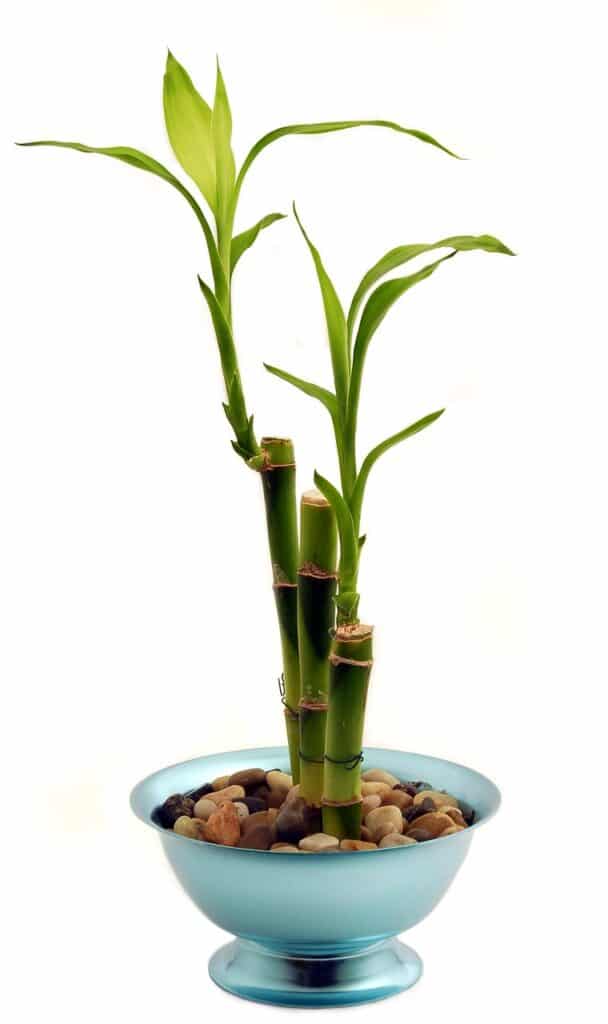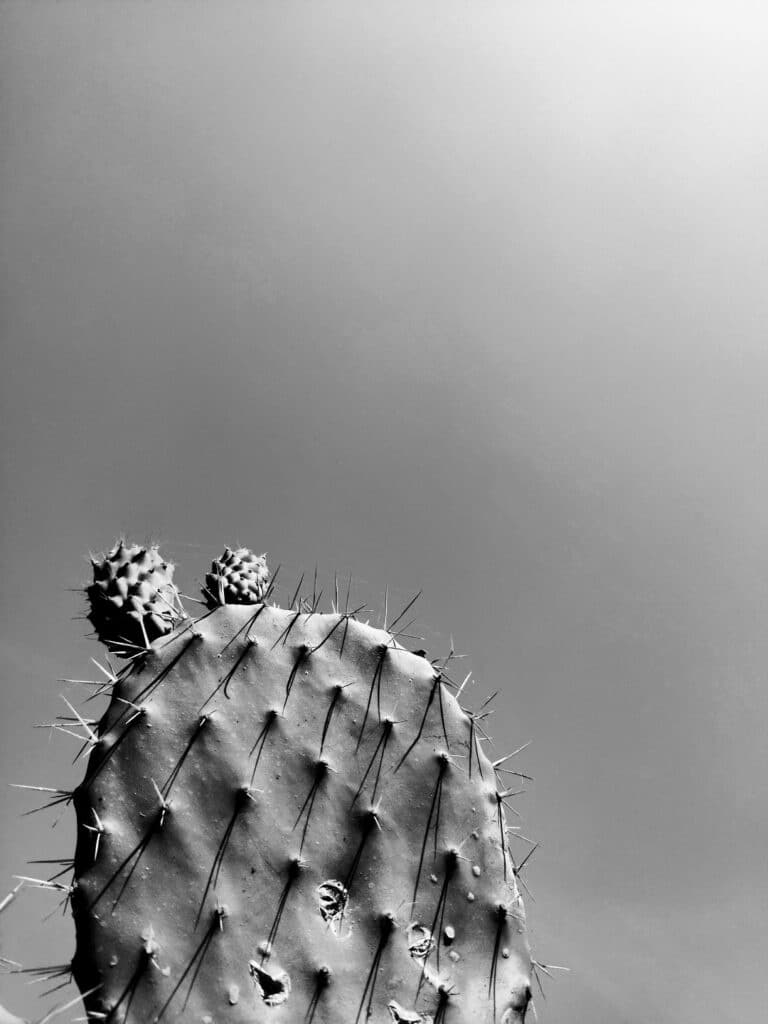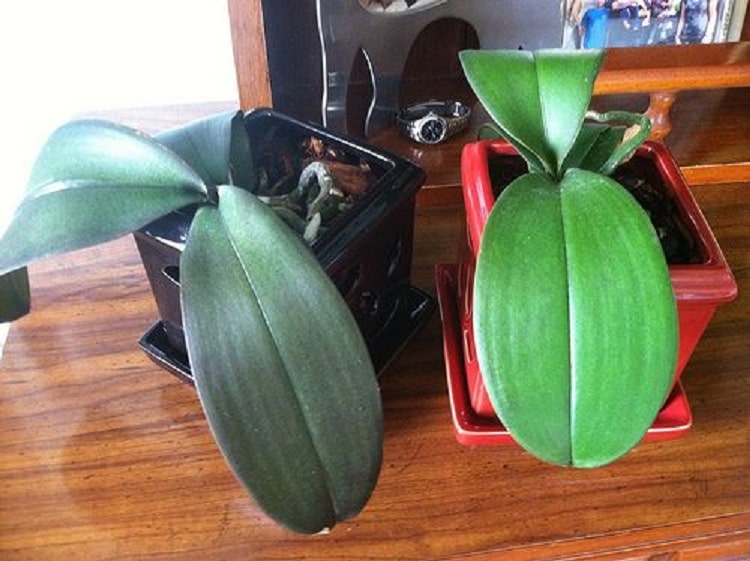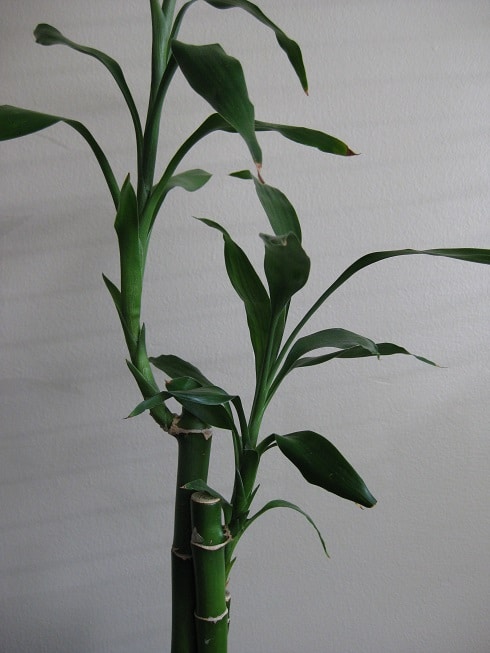You have a beautiful lucky bamboo plant but it’s starting to outgrow its current pot. Fear not! In this article, you’ll discover the simple steps to repotting a lucky bamboo plant, ensuring that it stays healthy and thrives in its new home.
With just a few supplies and a little bit of patience, you’ll be able to give your beloved plant the space it needs to continue bringing good luck and positive energy into your life. So grab your gardening gloves and let’s get started!
Choosing the Right Time

When to Repot
Repotting your lucky bamboo plant can be beneficial for its growth and overall health. But when is the right time to repot? Generally, it is recommended to repot your plant every one to two years. However, there are a few signs to look out for that indicate your lucky bamboo is due for a repot. If you notice overcrowded roots, stunted growth, or if the plant is top-heavy and unstable in its current pot, it is time to repot.
Seasonal Considerations
Choosing the right season to repot your lucky bamboo is essential for its successful transition and recovery. It is best to repot your plant during the spring or early summer when it is actively growing. Avoid repotting during the colder months when the plant’s growth slows down. Repotting during the optimal season ensures that your lucky bamboo has enough time to establish new roots and adjust to its new environment before entering a period of dormancy.
Preparing the New Pot
Selecting a Suitable Pot
Choosing the right pot is crucial as it will provide adequate space for the roots to grow while offering stability to the plant. Opt for a pot slightly larger than the current one to allow room for growth. A pot made of ceramic or glass is recommended as it helps retain moisture and prevents excessive evaporation. Ensure that the pot has drainage holes to promote proper water drainage and prevent soggy roots.
Cleaning the Pot
Before repotting your lucky bamboo plant, cleaning the new pot thoroughly is important. Use a mild detergent and warm water to wash the pot, ensuring that all dirt and debris are removed. Rinse the pot well and let it air dry completely before proceeding with the repotting process. Cleaning the pot helps eliminate any potential pathogens or pests that could harm your plant.
Preparing Drainage Holes
To ensure proper drainage for your lucky bamboo, creating or maintaining drainage holes in the new pot is essential. If the pot you have chosen does not already have holes, you can use a drill to create them. Place the pot on a stable surface and drill several small holes at the bottom, ensuring they are evenly spaced. These drainage holes will allow excess water to escape and prevent the roots from sitting in stagnant water, which can lead to root rot.
Gathering the Necessary Supplies
To successfully repot your lucky bamboo plant, gather all the necessary supplies beforehand to ensure a smooth process.
Potting Soil
Choose a high-quality, well-draining potting soil for your lucky bamboo plant. Avoid using garden soil or heavy clay-based soils as they can retain too much moisture and suffocate the roots. Look for a potting mix specifically designed for indoor plants, preferably one that contains a blend of perlite and peat moss to promote good drainage.
Pebbles or Stones
Pebbles or stones are essential for both aesthetic purposes and providing additional support to the plant. They help anchor the lucky bamboo and prevent it from toppling over in its new pot. Choose pebbles or stones that are clean, smooth, and of appropriate size to fit into the pot without overcrowding or obstructing the roots.
Watering Can
A watering can with a long spout or a narrow-mouthed container will allow you to water your lucky bamboo plant with precision, avoiding excessive water accumulation in the pot. Ensure that the watering can is clean and free from any residue or contaminants that could harm your plant.
Pruning Shears
Pruning shears are necessary for trimming the roots and shoots of your lucky bamboo plant during the repotting process. Choose sharp, clean pruning shears that are specifically designed for pruning plants to avoid causing unnecessary damage to the plant.

Gloves
Wearing gloves during the repotting process is highly recommended to protect your hands from any potential irritants, thorns, or allergies. Choose a pair of gloves that fit well and allow for dexterity to handle the plant and other supplies without restraint.
Optional: Fertilizer
While not essential for the repotting process, fertilizers can benefit your lucky bamboo plant’s long-term health and growth. If you choose to use a fertilizer, opt for a balanced liquid fertilizer specifically formulated for lucky bamboo or general houseplants. Follow the instructions provided by the manufacturer for proper application and dosage.
Preparing the Plant
Inspecting the Plant
Before repotting your lucky bamboo plant, take some time to inspect its overall condition. Check for any signs of stress, such as yellowing leaves, wilting, or discoloration. Inspect the stem for any signs of pests or diseases, such as white mold or black spots. If you notice any issues, address them before proceeding with the repotting process to ensure the best possible outcome.
Trimming the Roots
Carefully remove your lucky bamboo plant from its current pot and examine the roots. Trim any excessively long or tangled roots using clean pruning shears. Ideally, you want to trim the roots to a length that will fit comfortably in the new pot without overcrowding. Remove any dead or decaying roots as they can hinder the plant’s growth and nutrient uptake.
Trimming the Shoots
If your lucky bamboo plant has become top-heavy or if you prefer a more compact shape, it is advisable to trim the shoots as well. Use clean pruning shears to trim excess growth, focusing on any unbalanced or unruly shoots. Trimming the shoots will help maintain the plant’s overall shape and balance, making it more visually appealing.
Removing the Plant from the Existing Pot
Loosening the Soil
To remove your lucky bamboo from its current pot, gently loosen the soil around the edges using your fingers or a small trowel. Be careful not to damage or harm the roots in the process. Take your time and ensure that the soil is loosened evenly to allow for easy plant extraction.
Gently Extracting the Plant
Once the soil is sufficiently loosened, gently tilt the pot or tap its sides to encourage the plant to slide out. If it doesn’t come out easily, avoid pulling forcefully as this can damage the roots. Instead, use your fingers or a small tool to dislodge the plant from the pot carefully. Be patient and gentle to avoid causing unnecessary stress to the lucky bamboo.
Cleaning and Conditioning the Roots
Removing Excess Soil
After removing the lucky bamboo plant from its pot, gently shake off any excess soil clinging to the roots. Lightly brushing or rinsing the roots with clean water can help remove stubborn soil particles. Avoid using harsh water pressure or scrubbing the roots vigorously as this can damage their delicate structure.
Inspecting for Diseased Roots
While inspecting the roots, watch for any signs of diseased or damaged roots. Diseased roots may appear brown, mushy, or slimy. If you notice any such roots, they should be removed to prevent the spread of infection to the healthy roots. Trim the diseased sections using clean pruning shears, ensuring that you cut above the affected area.

Trimming Damaged Roots
In addition to removing diseased roots, it is important to trim any damaged or excessively long roots to encourage healthy growth. Using clean pruning shears, carefully trim the damaged sections, ensuring that the cuts are clean and smooth. Trimming the roots helps redirect the plant’s energy towards healthy regrowth and prevents potential issues in the new pot.
Soaking the Roots
Before repotting your lucky bamboo plant, it is beneficial to soak the roots in clean water for about 15-30 minutes. This helps hydrate the roots, making them more pliable and promoting successful establishment in the new pot. Ensure that the water is at room temperature or slightly warm to avoid shocking the plant’s sensitive roots.
Preparing the New Pot for Replanting
Adding Fresh Potting Soil
Once the new pot is clean and dry, add fresh potting soil to the bottom, filling it to a level allowing the lucky bamboo to be positioned at the desired height. Gently pat the soil down to create a stable base for the plant. Avoid packing the soil too tightly as this can hinder proper water drainage and air circulation.
Creating a Drainage Layer
To ensure adequate drainage and prevent waterlogging, create a drainage layer at the bottom of the pot. Place a layer of small pebbles or stones, approximately one inch thick, on top of the soil. This layer will act as a barrier, allowing excess water to flow freely and preventing the roots from sitting in stagnant water. Ensure that the drainage layer covers the entire bottom of the pot evenly.
Replanting the Lucky Bamboo
Positioning the Plant
Carefully lower the lucky bamboo plant into the new pot, ensuring the roots are evenly spread out evenly. Adjust the height of the plant by adding or removing soil underneath, making sure that the base of the plant is slightly elevated from the bottom of the pot. This elevation will aid in proper water drainage and prevent the roots from waterlogging.
Adding Soil and Pebbles
Once the plant is in position, gently add fresh potting soil around the roots, filling it until it reaches the desired level. Ensure that the soil is evenly distributed and packed lightly to stabilize the plant. After adding the soil, gently press down to secure the lucky bamboo in place. Finally, add a layer of decorative pebbles or stones on top of the soil to enhance the visual appeal and provide additional support.
Stabilizing the Plant
To ensure that the newly repotted lucky bamboo remains stable, gently use your fingers to press the soil around the plant, securing it in position. Be cautious not to apply excessive force as this can damage the roots. You can use bamboo stakes or plant ties to support the plant until it establishes roots in the new pot. However, avoid tying the plant too tightly to allow room for growth and movement.
Watering and Post-repot Care
Watering the Repotted Plant
After repotting, thoroughly water your lucky bamboo plant to promote root establishment. Use a watering can to evenly wet the soil evenly, ensuring that the water seeps down to the roots. However, be cautious not to overwater, as excessive moisture can lead to root rot. Allow the water to drain completely, ensuring that the pot is not sitting in stagnant water.
Monitoring for Moisture Levels
Proper moisture management is crucial for the health of your lucky bamboo. Check the soil moisture levels regularly by inserting your finger into the soil. If it feels slightly dry to the touch, it is time to water the plant. However, if the soil feels wet or overly saturated, avoid watering to prevent root suffocation. Remember, lucky bamboo prefers slightly moist but not soggy soil.
Providing Adequate Light
Lucky bamboo thrives in bright, indirect light. Place your repotted plant in a location where it will receive a moderate amount of filtered sunlight, such as near a window with sheer curtains. Avoid exposing the plant to direct sunlight as it can scorch the leaves. If you notice that the leaves are turning yellow or brown, it could indicate either too much or too little light, so adjust accordingly.
Optimal Temperature and Humidity
Lucky bamboo prefers temperatures between 60-80°F (15-27°C). Avoid placing your plant in areas with extreme temperature fluctuations or drafts, as it can cause stress to the plant. Maintain a relatively stable room temperature and avoid exposing the plant to cold drafts or hot air vents. Additionally, lucky bamboo thrives in moderate humidity, so consider using a pebble tray or a humidifier to provide adequate moisture in drier environments.
Maintaining and Troubleshooting
Regularly Checking for Root Growth
As your lucky bamboo settles into its new pot, regularly check for signs of root growth. Healthy roots should appear white and firm. If you notice any discolored or mushy roots, it could indicate overwatering or root rot. Trim any affected roots immediately to prevent further damage and adjust your watering routine accordingly.
Fertilizing the Plant
To encourage the growth and vitality of your lucky bamboo, you can choose to fertilize it on a regular basis. However, be cautious not to overfertilize as it can cause fertilizer burn and harm the plant. Opt for a balanced liquid fertilizer specifically formulated for lucky bamboo or houseplants. Follow the instructions provided by the manufacturer for proper dosage and frequency of application.
Addressing Common Issues
While lucky bamboo is relatively low-maintenance, it can still face common issues. Yellowing leaves may indicate either overwatering or underwatering, so adjust your watering routine accordingly. Pale or weak growth can be a sign of insufficient light, so consider relocating the plant to a brighter spot. If you notice pests, such as spider mites or mealybugs, isolate the plant and treat it with an appropriate insecticide or use natural methods like neem oil sprays.
Revitalizing a Failing Lucky Bamboo
If your lucky bamboo plant is experiencing severe decline, such as widespread yellowing leaves or stunted growth, revitalizing it may require extra care. Consider removing the plant from its pot, trimming the roots, and replanting it using fresh soil. Additionally, provide optimal light conditions, review your watering routine, and consider fertilizing to stimulate new growth. Patience and consistent care are key in reviving a struggling lucky bamboo.
As you embark on repotting your lucky bamboo plant, follow these comprehensive steps and tips to ensure a successful transition and continued growth. Remember to choose the right time, gather the necessary supplies, and properly prepare the plant and the new pot. With proper care and attention to post-repot care, your lucky bamboo will thrive in its new home, bringing beauty and luck to your space for years.




